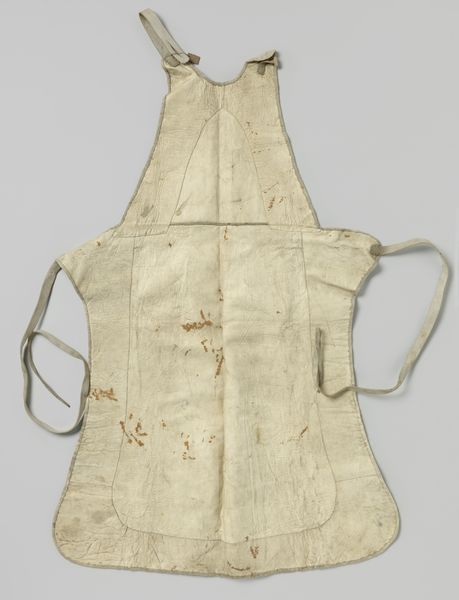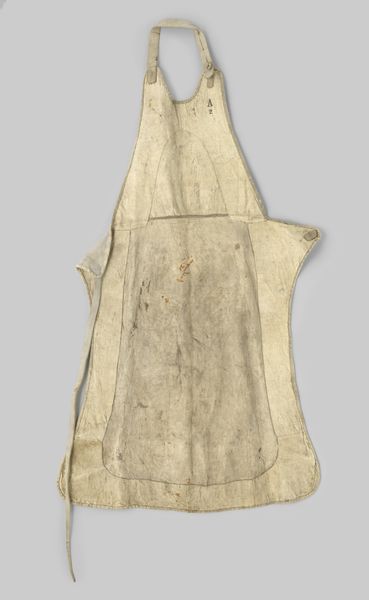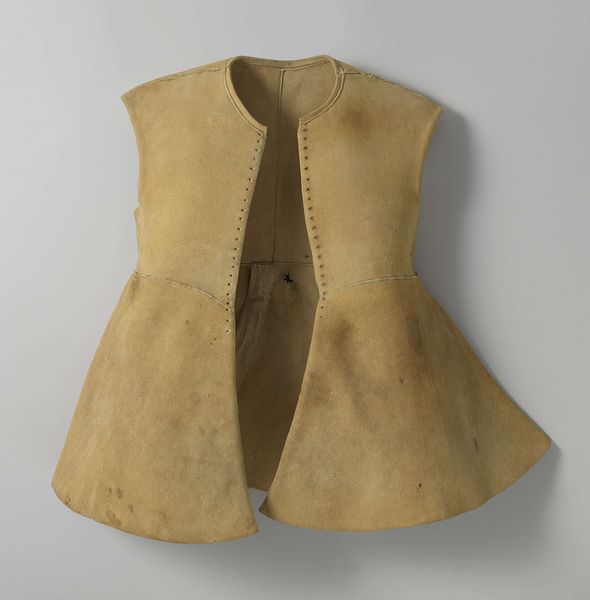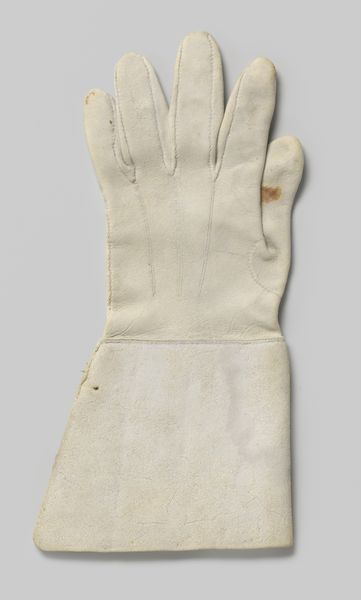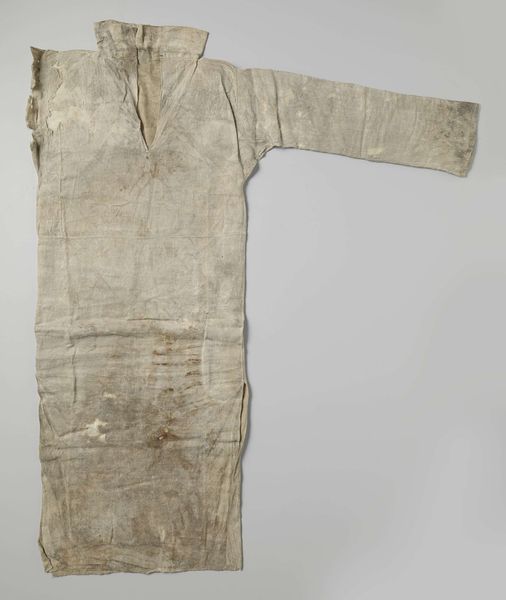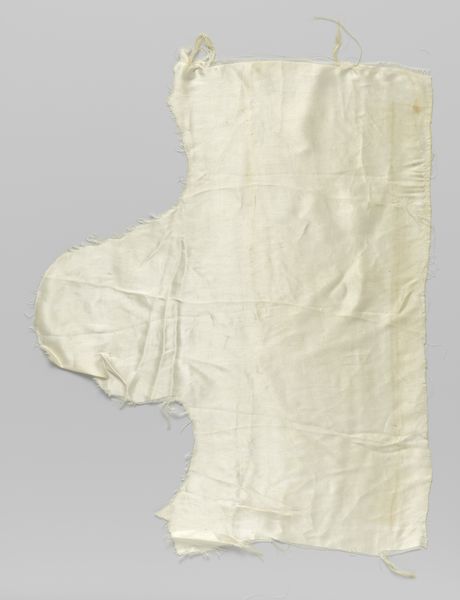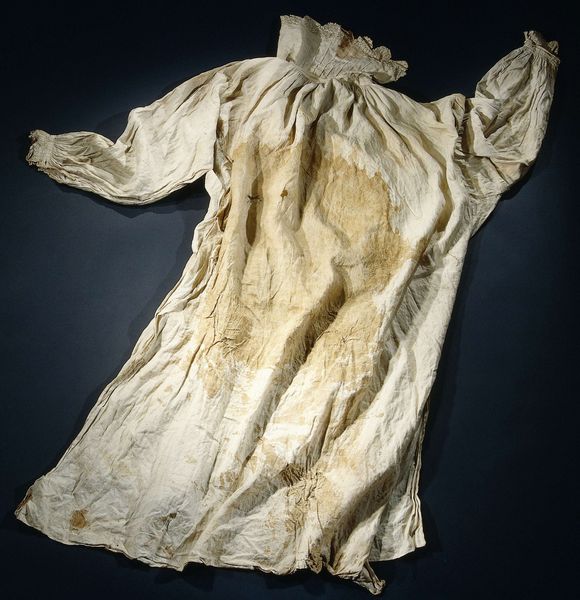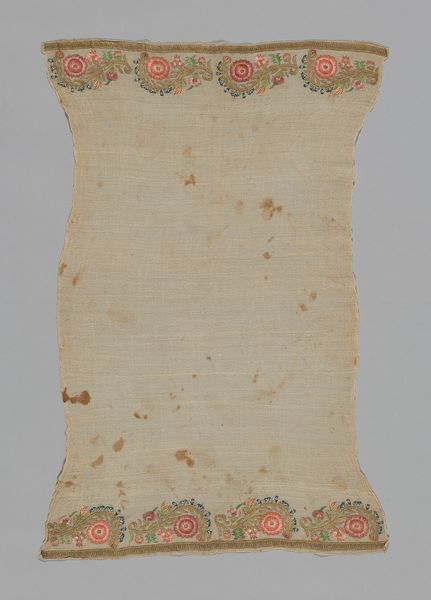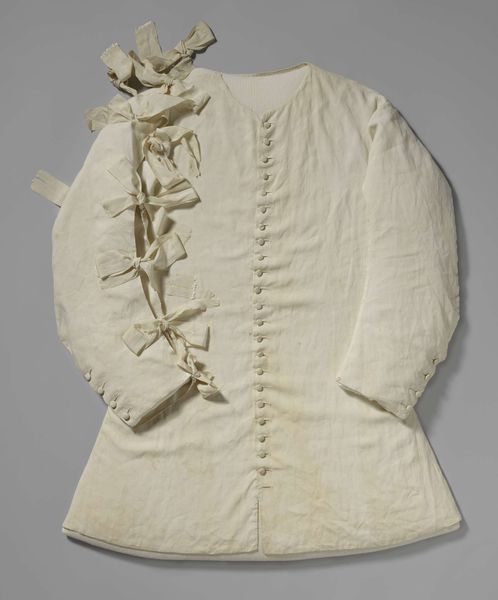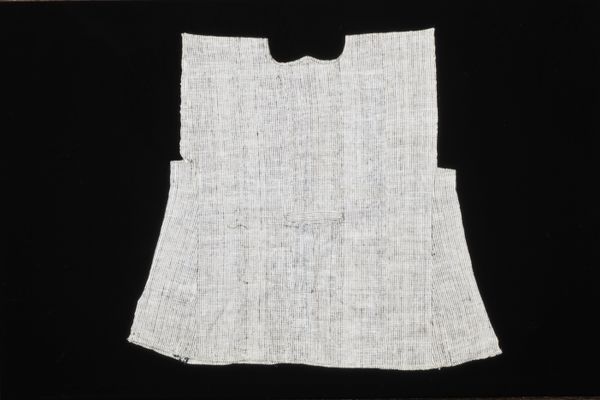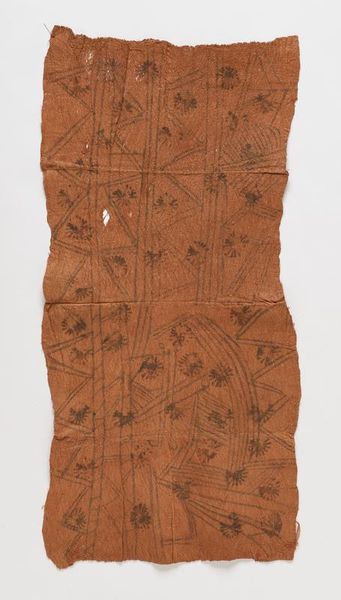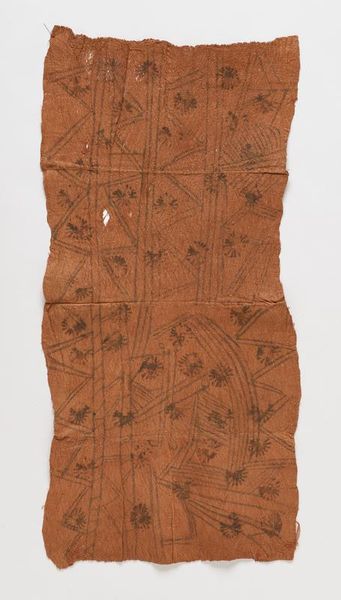
Leren schootsvel behorend tot de uitrusting van een sappeur van de 1e Afdeling Noord-Hollandse Schutterij c. 1800 - 1830
0:00
0:00
anonymous
Rijksmuseum
found-object, photography
#
found-object
#
photography
Dimensions: length 115 cm, width 70 cm
Copyright: Rijks Museum: Open Domain
Curator: This intriguing artifact from the Rijksmuseum is a leather apron, a "Leren schootsvel," which was part of the equipment of a sapper from the 1st Division of the North Holland Shooting Guild. It dates back to somewhere between 1800 and 1830. Editor: It's incredibly unassuming, isn't it? The off-white leather, stained and marked, feels almost ghostly. I immediately think of the weight and potential danger that this apron would have seen, a symbol of manual labor and also military duty during a volatile period in European history. Curator: Precisely! Think of what the sapper was: a soldier responsible for tasks like building fortifications and clearing obstacles – a dangerous job involving explosives. Leather itself possesses potent symbolic qualities—protection, resilience, connection to animal life—and here it guards against a very specific set of hazards. It's more than just material, it's an icon of a particular trade and skill set. Editor: I wonder about the implications of protection and class—who had access to this type of gear? Did the uniform itself create an elite among soldiers, an implicit social stratification based on tools and technology? The wear and tear suggests considerable use, almost like the map of a life spent in service, revealing a potential lack of standardization of these objects and the hard living and circumstances to which these historical figures were subject. Curator: Absolutely. The very design of the apron, its size, and cut, speaks to efficiency. This simple shape represents both functionality and membership to this North Holland military organization. This piece transcends its physical presence, inviting reflections about craft, social structures, the role of militias, and historical conflict. Editor: Seeing an object this ordinary reminds me that the stories we tell about history are often stories about power. By examining these commonplace items, we start piecing together narratives of ordinary people in historical events that involved resistance, cooperation, class identity, and everyday strategies for living. I now read it as a silent participant in battles between the powerful, its own muted symbolism is striking. Curator: A fitting sentiment indeed. The apron's aged surface offers glimpses into hidden, underrepresented parts of our cultural heritage and their significance in both military symbolism and practical function. Editor: Ultimately, what at first seems like an unremarkable object becomes a powerful statement on those lives that might otherwise go unnoticed.
Comments
No comments
Be the first to comment and join the conversation on the ultimate creative platform.
